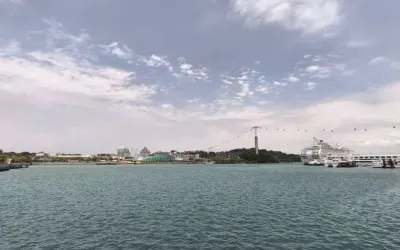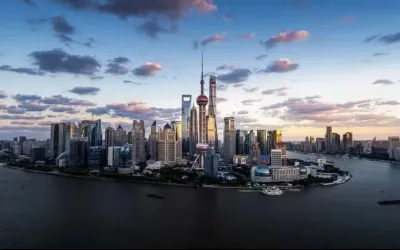新加坡為什麼如此富裕?
Singapore is a tiny country, so tiny you can drive across the island in just an hour. Despite its size and lack of natural resources, Singapore's 5.6 million people enjoy one of the highest average incomes in the world ahead of countries like Germany, France and Japan.
新加坡面積較小,驅車一小時便能橫穿這個島國。雖然它地域有限、缺乏自然資源,但這裡的人均收入水平要高於德國、法國和日本。
So how did this little island got so rich? Singapore doesn't have resources like coal or oil, but it does have something countries cann't buy, location. The island sits in the middle of an important re route connecting Asia to Europe. That's a key reason why the Britain decided, back in 1819, to set up a colony in Singapore. Location isn't everything though. There are several countries nearby that could have made use of their whereabouts, but they weren't quiet successful. That's because there are other ingredients that go into this crazy rich Singapore recipe. The Raffles Hotel which is one of the most prominent icons of Singapore's colonial history. Unlike some of its neighbors which wanted to separate themselves from their colonial histories, Singapore kept close ties with Britain even after independence in 1965. That decision announced to the rest of the world that Singapore was open for business.That's important because we know now that exports help to grow and expand an economy. But back then, it wasn't conventional wisdom. Singapore, Hong kong, Taiwan and south Korea became known as the four Asian tigers, which has grown rapidly since the 1960s. Their rise was fueled by exports, industrialization and more crucially, big doses of government intervention. That was especially true for Singapore.
為什麼這個小小的島國會這麼富有呢?新加坡沒有煤炭、石油,但它享有無法用錢買到的資源--地理優勢。這也是1819年英國決定在這裡建立殖民地的主要原因。然而地理位置並不是全部原因,新加坡的幾個鄰國也具有這項優勢,但他們並沒有取得很大成功。在烹制富豪新加坡的菜譜中還需要其他的食材。萊佛士酒店是新加坡的殖民歷史的重要標誌之一。
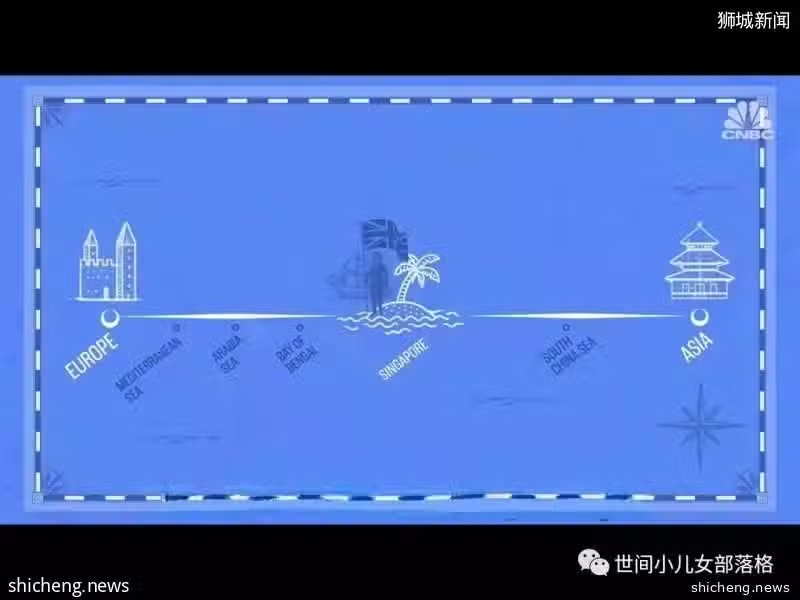
不同於那些急於擺脫殖民歷史的鄰國,即使是在1965年獨立以後,新加坡仍與英國保持著密切的合作關係。這項決策等於向全世界宣布新加坡對外開放商業貿易。對外開放意味著經濟體能夠發展壯大,這一點十分重要。但是這在當時看來確實不符合傳統觀念。自上世紀60年代新加坡、香港、台灣和韓國不斷發展,成為亞洲四小龍。它們的崛起靠的是對外開放、工業化以及最重要的--政府干預。對新加坡來說更是如此。
Labor strikes were common on the island in the 1960s, even with high employment. On Top of that there was a housing crisis, with Singapore being home to one of the largest slum settlements in the world.So how do you build a more disciplined labor force to attract investment? Well, you give them something to work for, like a house of their own, which is why one of the first Singapore government agencies set up focused on building affordable public housing. While just 9% of the population live in public housing in the 1960s, that figure stands at more than 80% today, add in greater employee rights and strikes became extremely rare. At the same time the government attracted foreign investment through tax incentives, growing the economy and easing unemployment, which fell from an estimated 14% in 1959 to 4.5% in the 1970s. By the 1980s, Singapore was a regional manufacturing hub, and it was the world's biggest producer of hard disk drives. But today, manufacturing makes up only about 20% of singapore's GDP.
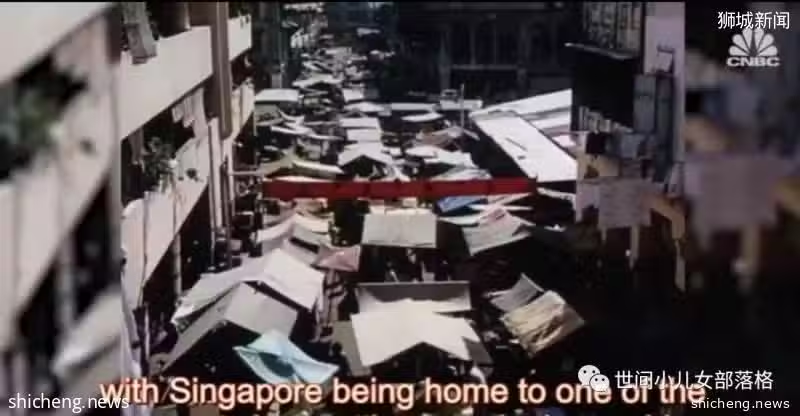
上世紀60年代新加坡的就業率很高,但工人罷工的現象依然很普遍。此外新加坡當時是世界最大的貧民聚集地之一,面臨住房危機。那應該如何建立一個更為行之有效的勞工制度來吸引投資?首先你需要讓他們有能夠為之奮鬥的事物,比如屬於自己的房子。這就是新加坡的第一屆政府確立後把重心放在建設經濟型公共住房的原因。當時居住在公共住房的人數只占總人口的9%,但現在這個數字已經超過80%;再加上雇員權利的保障,罷工現象很少出現。與此同時政府實行捐稅政策不斷吸引外商投資,使經濟不斷增長,就業壓力得以緩解--失業率從1959年的14%左右,在1970年以後降低至4.5%。到上世紀80年代新加坡已經成為區域製造業中心,還是世界上最大的硬碟生產地,但現在製造業只占新加坡GDP20%左右。
Take a look at singapore's growth in GDP. You can see two big surges, one beginning in the late 80s and another at the start of the new millennium. Ironically, Singapore has a downturn to thank for that. You see in 1985 Singapore went into its first post independence resource recession, prompting the government to introduce measures.State-owned companies like telecommunication were privatized to make them more competitive. Then at the turn of the century, service industries like finance and insurance were father liberalized. That openness have to grow the share of services from just 20 percent of GDP in 1985 to more than 70 percent in 2017. Multinational companies began to set up regional headquarters in Singapore. That attract even bigger players, boosting singapore's attractiveness to corporate and in turn its GDP. Now , Singapore is ranked as one of the world's easiest places to do business.
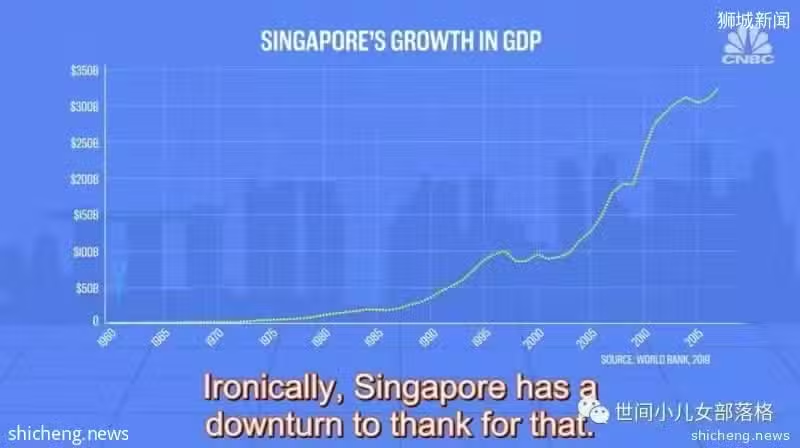
仔細看新加坡的GDP增長曲線,就能發現有兩處增長點:第一個始於80年代末,另一個在2000年初。然而新加坡還得慶幸這兩個時間段之間的一次滑坡。新加坡在1985年經歷了後獨立時期的資源衰竭,這促使政府尋找新的解決方案。一些國有企業例如通訊公司實行私有化,增加其競爭力;之後在21世紀初,金融和保險等服務業更加自由化。服務業的開放使其在GDP的占比從1985年的20%增長至2017年的70%。跨國公司開始紛紛在新加坡建立區域總部。這一發展趨勢吸引了更大的投資者,大幅提升了新加坡貿易合作的吸引力及其GDP。現在新加坡在全球是投資最便意的國家。
Singapore has been praised for transforming itself from a developing to developed economy. But most singaporeans feel rich? Well, not exactly. Two of the most important reasons? The high cost of living and inequality. For five years in a row Singapore has been named the world's most expensive city, ahead of New York and London. That's largely because of taxes on cars, making Singapore the most expensive place in the world to buy and run an automobile. It's also the third most expensive place on earth to buy clothes. But personal care, household goods and domestic help in Singapore tend to be less expensive than in other major cities. While Singapore is rich in terms of GDP per capita, the median monthly salary is $3,270. That doesn't sound too bad, but about 20% of that goes into a mandatory savings account. You can use that account to pay for a medical bills, housing and education, but it does restrict the purchasing power of the population.
新加坡成功將其從發展中國家發展為已開發國家,廣受讚譽。但是不是大多數的新加坡人都非常富有呢?很遺憾,並不是。這主要有兩方面的原因:高消費和不平等。新加坡已經連續五年被評為世界消費最高的城市,位列紐約和倫敦之前,其主要原因是對汽車收稅較高,使得新加坡購買和使用汽車的費用成為世界之最。此外,新加坡的服裝價格也位列世界前三,但其在個人護理、生活用品、家政服務方面的消費水平與其他已開發國家相比較低。新加坡的人均GDP很高,中等收入者每月的平均工資約3270美金。聽起來還不錯,但是其中的20%都要強制存入一個帳戶,用於醫療、住房、教育的支出,不過這一舉措也限制了國民的購買力。
You probably heard of the movie Crazy Rich Asians,which was set here in Singapore. And there was no wonder. Because Singapore has about 184,000 millionaires, making it truly is the land of the crazy rich. That's great news. The Singapore also has a fairly high rate of inequality compared with other developed countries. Let's look at the Gini coefficient, which is a scale used to calculate inequality, With zero being the most equal and one being the least. Singapore's Gini coefficient, after accounting for taxes and transfers was 0.356 in 2017. That was worse than countries like the United Kingdom, Japan, Korea and Germany, although it fared better than some, like the United States. Is that number really that bad? That question had books like this flying off the shelves. A think tank ignited public debate on the divide in social classes, after it found that on average, Singaporeans who live in public housing have fewer than one friend who lives in private housing. The government has caused the issue of inequality a national priority, but it remains to be seen if it is a problem that can be tackled effectively.
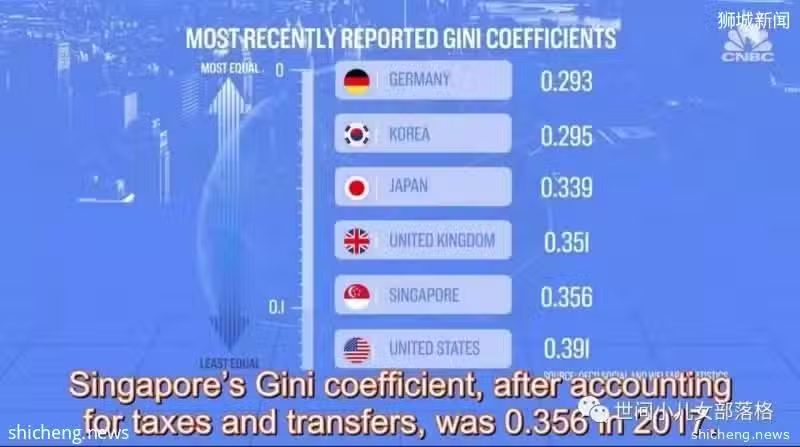
很多人都知道電影《亞洲富豪》,它的拍攝地就在新加坡。新加坡的百萬富翁大約有18.4萬,毫無疑問,它是當之無愧/名副其實的富庶之地。但同時令人感到驚奇的是,在已開發國家中新加坡的不平等程度相當高。經過對稅務和資金流動進行核算,2017年新加坡的基尼係數(用來表示不平等程度的度量單位,"0"表示最平等,"1"表示完全不平等)達到0.356,這比英國、日本、韓國、德國等國家情況要差,比美國的情況稍好一些。這個數字是不是真有這麼糟呢?確實如此,關於新加坡不平等現象的書籍《This is What Looks Like》一上架就銷售一空。一個專家小組曾經激發了一場對社會階層分化的公開討論,因為他們發現那些居住在公共住房的人比住在私人住宅的人擁有得要少。政府已經將不平等問題作為國家的當務之急,但它是否能有效解決尚未知曉。
英文原文出自CNBC
